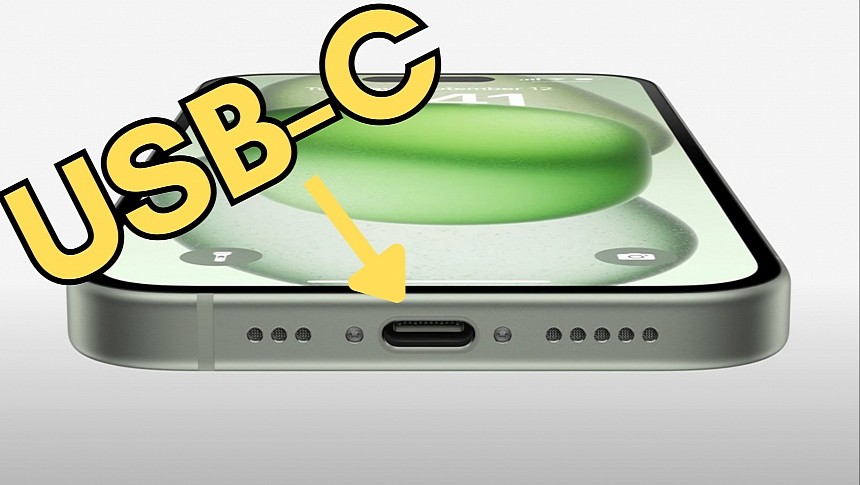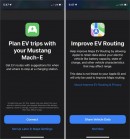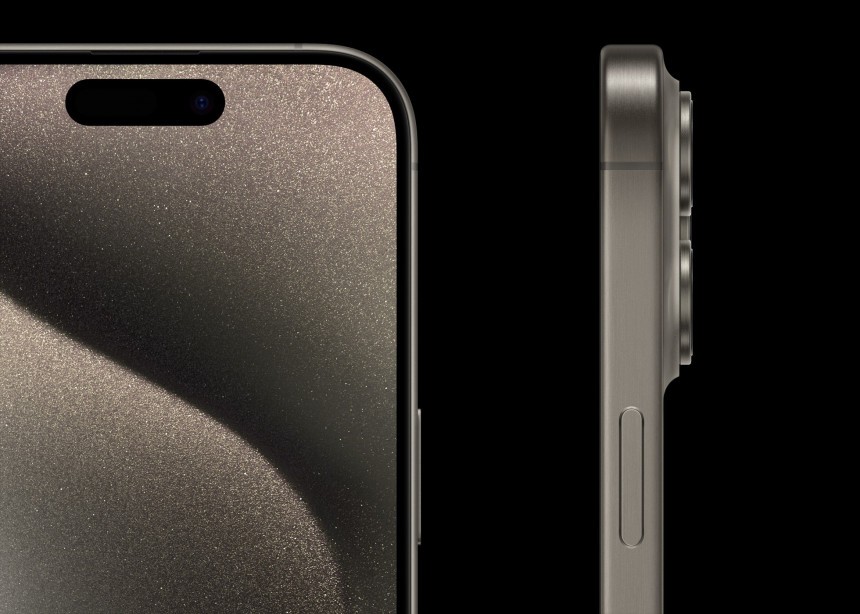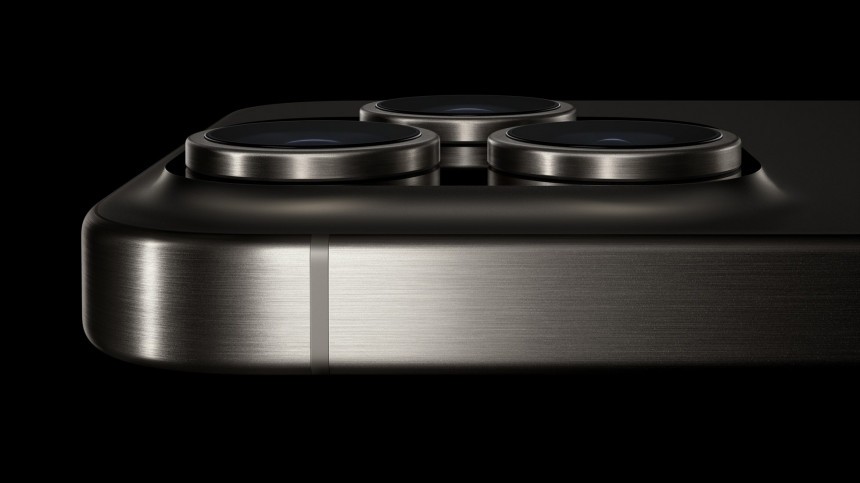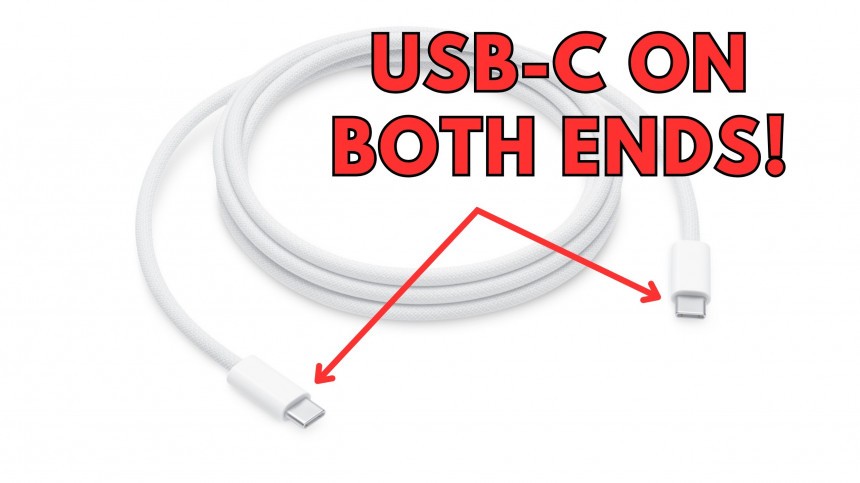Apple launched the iPhone 15 earlier this year with one of the biggest changes in history. The new lineup abandons the company's proprietary Lightning connector and adopts USB-C, the port that's already widely used in the Android ecosystem.
The last time Apple replaced the iPhone connector was in 2012 when it launched the iPhone 5. At that point, Apple introduced the Lightning port, dropping the inconvenient 30-pin connector used on iPhones and iPads.
While Apple tried to turn the switch to USB-C into a marketing stunt, the transition was forced by the European Union. All device makers selling phones and tablets in Europe must equip their devices with USB-C according to a new law whose role is to reduce e-waste and make it more convenient for users to charge their devices.
The new iPhone 15 port proved the USB-C doesn't make things more convenient in the Apple ecosystem. In fact, it did exactly the opposite, as CarPlay users ended up struggling with the same problems as their Android Auto siblings who've had USB-C for years. Choosing the right cable seems a major challenge for CarPlay users running the app with an iPhone 15, mainly because most people are unaware that some cords are charge-only.
Apple's transition to USB-C was a difficult decision for the American tech giant, but it now looks like the company faces another hard choice. India wants to follow in the EU's footsteps and make USB-C mandatory, but Apple could be hit even harder this time.
Like the EU, India wants to enforce USB-C use on all smartphones. This isn't a problem in the Android space, where most smartphones already come with the port, but it causes substantial challenges for Apple.
The iPhone 15 already uses USB-C, but India wants all devices built in the country to adopt the same port after the law comes into effect.
Apple uses Indian production plants for several older-generation iPhones, including the iPhone 14 and iPhone SE. These devices come with a Lightning connector, so according to the proposed regulations, Apple would have to either upgrade them to USB-C or stop producing these models in the country.
Apple complied with EU regulations by launching the iPhone 15 with USB-C, so complying with the new law was easier because the Cupertino-based tech giant doesn't make any devices on the continent. Things are different in India, as Apple uses its local production capacity specifically to reduce reliance on India.
Apple has invested billions of dollars in Indian production in the last few years, upgrading manufacturing from cheaper and previous-generation models to high-end iPhones as part of the latest series.
Apple faces a difficult decision in India because stopping production of Lightning-equipped iPhones would significantly increase manufacturing costs. Apple builds iPhones in India as part of a program called production-linked incentives, or PLI, so it qualifies for state-offered incentives because it reaches the country's volume targets.
If it can no longer build previous-generation iPhones, Apple will no longer receive the tax incentives, eventually being forced to increase the price of models sold in the country and elsewhere (as smartphones built in India are also exported to other markets).
A recent report reveals that Apple asked the Indian authorities for an exemption from the law. If this isn't possible, Apple hopes it can delay the new regulations until it finds a way to comply (or until it drops older-generation iPhones or finds other production hubs outside India).
The company seems confident it'll eventually escape unhurt for a simple reason. Apple needs India, and India needs Apple, so the relationship between the two works both ways.
Apple also doesn't seem to favor bringing USB-C to previous-generation iPhones for multiple reasons. First, it would increase the costs, and redesigning older iPhones to accommodate USB-C doesn't make sense.
Second, Apple doesn't want to kill off its Lightning accessory market yet. The Lightning port spawned a whole new market with products like headphones and chargers, many of them certified for the smartphone as part of a Made for iPhone program.
Third, USB-C is already causing headaches for the American company. The debut of the iPhone 15 demonstrated that Apple's customer base wasn't ready for the change, especially in the car where CarPlay required high-speed cables.
Apple attempted to address this shortcoming with a ridiculously expensive adapter that converted Lightning to USB-C, allowing users to stick with their Lightning cable (with USB-A at the other end) to connect an iPhone 15 to a car. The adapter caused other problems, including connection struggles, so Apple eventually started selling a USB-A to USB-C cable from Belkin in its stores.
The company still doesn't have its own USB-A to USB-C cord, and it doesn't look like it plans to release one, focusing instead on cables with USB-C on both ends.
The world wasn't ready for a USB-C iPhone, and Apple knows it, so India's new regulations only make the company's headaches even more painful.
While Apple tried to turn the switch to USB-C into a marketing stunt, the transition was forced by the European Union. All device makers selling phones and tablets in Europe must equip their devices with USB-C according to a new law whose role is to reduce e-waste and make it more convenient for users to charge their devices.
The new iPhone 15 port proved the USB-C doesn't make things more convenient in the Apple ecosystem. In fact, it did exactly the opposite, as CarPlay users ended up struggling with the same problems as their Android Auto siblings who've had USB-C for years. Choosing the right cable seems a major challenge for CarPlay users running the app with an iPhone 15, mainly because most people are unaware that some cords are charge-only.
Apple's transition to USB-C was a difficult decision for the American tech giant, but it now looks like the company faces another hard choice. India wants to follow in the EU's footsteps and make USB-C mandatory, but Apple could be hit even harder this time.
India's new USB-C regulations
The iPhone 15 already uses USB-C, but India wants all devices built in the country to adopt the same port after the law comes into effect.
Apple uses Indian production plants for several older-generation iPhones, including the iPhone 14 and iPhone SE. These devices come with a Lightning connector, so according to the proposed regulations, Apple would have to either upgrade them to USB-C or stop producing these models in the country.
Apple complied with EU regulations by launching the iPhone 15 with USB-C, so complying with the new law was easier because the Cupertino-based tech giant doesn't make any devices on the continent. Things are different in India, as Apple uses its local production capacity specifically to reduce reliance on India.
Apple has invested billions of dollars in Indian production in the last few years, upgrading manufacturing from cheaper and previous-generation models to high-end iPhones as part of the latest series.
If it can no longer build previous-generation iPhones, Apple will no longer receive the tax incentives, eventually being forced to increase the price of models sold in the country and elsewhere (as smartphones built in India are also exported to other markets).
A recent report reveals that Apple asked the Indian authorities for an exemption from the law. If this isn't possible, Apple hopes it can delay the new regulations until it finds a way to comply (or until it drops older-generation iPhones or finds other production hubs outside India).
The company seems confident it'll eventually escape unhurt for a simple reason. Apple needs India, and India needs Apple, so the relationship between the two works both ways.
The USB-C impact
Second, Apple doesn't want to kill off its Lightning accessory market yet. The Lightning port spawned a whole new market with products like headphones and chargers, many of them certified for the smartphone as part of a Made for iPhone program.
Third, USB-C is already causing headaches for the American company. The debut of the iPhone 15 demonstrated that Apple's customer base wasn't ready for the change, especially in the car where CarPlay required high-speed cables.
Apple attempted to address this shortcoming with a ridiculously expensive adapter that converted Lightning to USB-C, allowing users to stick with their Lightning cable (with USB-A at the other end) to connect an iPhone 15 to a car. The adapter caused other problems, including connection struggles, so Apple eventually started selling a USB-A to USB-C cable from Belkin in its stores.
The company still doesn't have its own USB-A to USB-C cord, and it doesn't look like it plans to release one, focusing instead on cables with USB-C on both ends.
The world wasn't ready for a USB-C iPhone, and Apple knows it, so India's new regulations only make the company's headaches even more painful.
